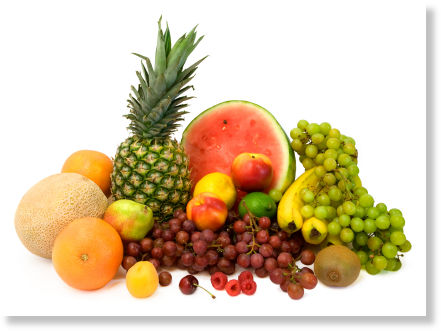The glucose in sucrose undoubtedly contributes to the glycaemic load of the diet, and the more sugar someone eats, the greater the rise in blood sugar levels. More glucose in the bloodstream means more insulin, of course, which as we know can contribute to health issues such as insulin resistance, Type 2 diabetes, heart disease and, of course, weight gain.
In contrast to glucose, fructose has traditionally enjoyed a healthy reputation, mainly on the basis that it does not raise blood sugar levels. Fructose is also the predominant sugar in many fruits - something which tends to bestow it with an image of healthiness.
In recent years, though, a steadily growing mound of research demonstrates that fructose, while it does not raise blood sugar levels directly, can nevertheless have some profoundly toxic effects on the body. Interest here has been sparked, at least in part, by the fact that increasing amounts of the sweetening agent 'high fructose corn syrup' (HFCS) are making their way into the diet. HFCS is made cheaply by the chemical treatment of the starch in corn, and contains fructose and glucose in roughly equal measure.
HFCS began being used in food production in meaningful quantities in the 1970s, but these days contributes substantially to our diets as an ingredient in foods such as breakfast cereals, cereal bars, baked goods such as biscuits and cakes, pre-prepared desserts, sweetened yoghurts and soft drinks, as well as some more savoury foods including cooking sauces, condiments (e.g. ketchup) and crackers.
The potential for fructose to harm health was further demonstrated by a study published recently on-line in the American Journal of Clinical Nutrition [1]. In this study, healthy, normal-weight men aged 20-50 consumed in beverage form either:
- 40 g of fructose a day (medium fructose)
- 80 g of fructose a day (high fructose)
- 40 g of glucose a day (medium glucose)
- 80 g of glucose a day (high fructose)
- 80 g of sucrose a day (high sucrose)
Here are some of this study's most notable findings:
- C-reactive protein, a marker of inflammation, increased in all 5 groups
- LDL cholesterol size decreased in the high fructose and high sucrose groups (smaller LDL particles are associated with heightened risk of cardiovascular disease)
- General changes in LDL particle size consistent with raised cardiovascular disease risk occurred in the medium fructose, high fructose and high sucrose groups
- Waist-to-hip ratio increased the medium fructose, high fructose and high sucrose groups (higher waist-to-hip ratios are associated with an increased risk of conditions such as heart disease and Type 2 diabetes)
- Fasting glucose levels increased in all five groups
- Leptin levels increased in the medium glucose and high glucose groups (leptin is a generally desirable hormone to have around, in that it speeds the metabolism and helps curb appetite)
References:
- Aeberli I, et al. Low to moderate sugar-sweetened beverage consumption impairs glucose and lipid metabolism and promotes inflammation in healthy young men: a randomized controlled trial Am J Clin Nutr 2011 First published online June 15, 2011




A piece of largely junk research which contributes to the deliberately fostered myths that type 2 diabetes is somehow related to high carbohydrate content diets.
Type 2 diabetes is the most jealously guarded disease of the medical profession and the pharmaceutical industries. It results from an alteration to a chemical reaction called the modified electron transport chain in pancreatic beta cells. The causal agents are trans fatty acids found in refined vegetable oils. Obesity is very largely caused by the poisoning of cell and mitochondrial membranes by trans fatty acids so that glucose transport is progressively impared and thereby metabolism is reduced.
Do NOT be deceived by the continual streams of lies and propaganda fed to you by the main stream media.
Obesity is cureable in most cases by replacing trans-fats in the diet with natural cis isomer form oils. The same techninque will cure diabetes in some individuals with the right (and genetically determined) repair systems which can remove the offending trans fatty acids from their locations in beta cells. This group is approximately 20% of the diabetic population but it varies much between countries.
Would SOTT like to run an experiment along these lines? Be free doing as well as free thinking?
check out tfx.org